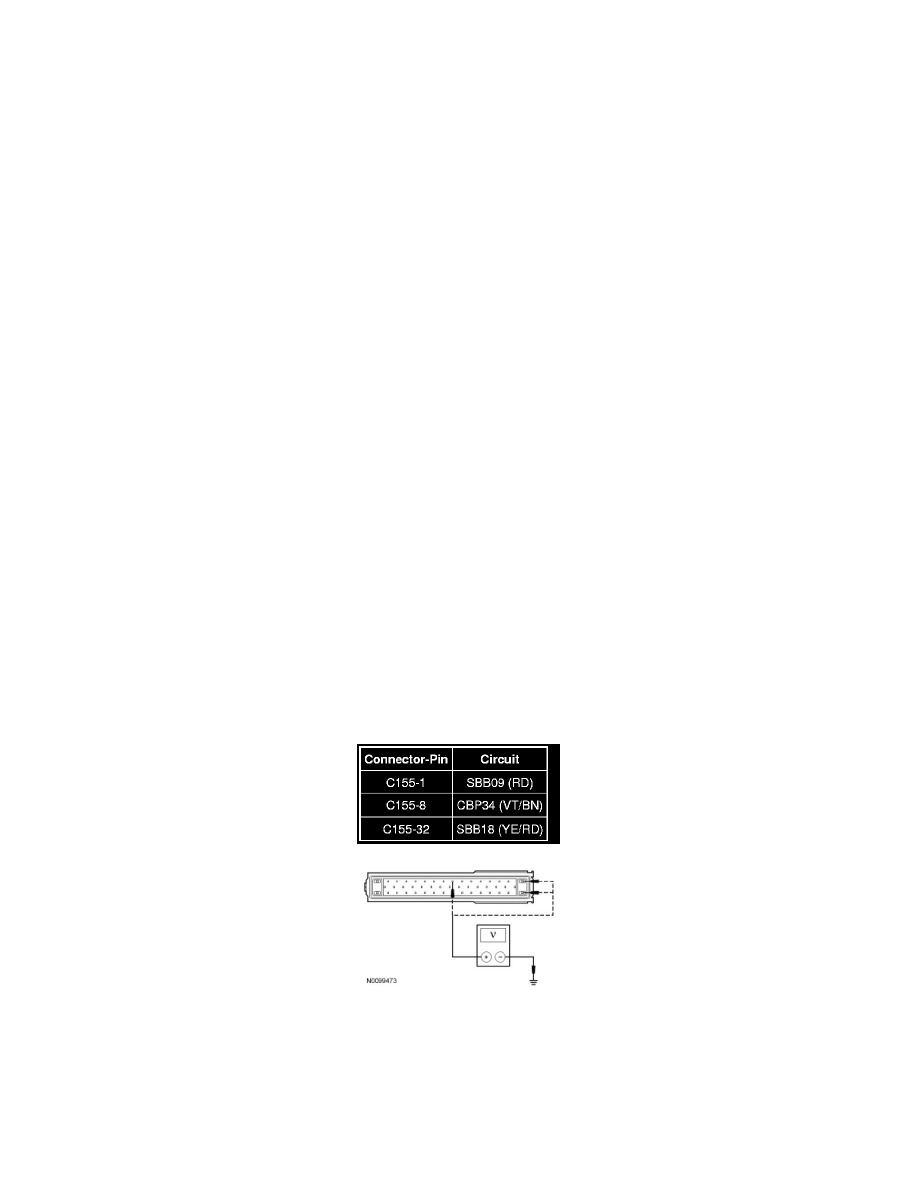Escape 4WD L4-2.5L (2010)

Communications Network
Pinpoint Tests
Pinpoint Test B: The ABS Module Does Not Respond To The Scan Tool
Refer to Wiring Diagram Set 14 (Escape/Mariner, Escape Hybrid/Mariner Hybrid), Module Communications Network for schematic and connector
information. See: Diagrams/Electrical Diagrams/Diagrams By Number
Refer to Wiring Diagram Set 42 (Escape/Mariner, Escape Hybrid/Mariner Hybrid), Vehicle Dynamic Systems for schematic and connector information.
See: Diagrams/Electrical Diagrams/Diagrams By Number
Normal Operation
The ABS module communicates with the scan tool through the High Speed Controller Area Network (HS-CAN).
This pinpoint test is intended to diagnose the following:
-
Fuse
-
Wiring, terminals or connectors
-
ABS module
PINPOINT TEST B: THE ABS MODULE DOES NOT RESPOND TO THE SCAN TOOL
NOTICE: Use the correct probe adapter(s) when making measurements. Failure to use the correct probe adapter(s) may damage the
connector.
NOTE: The following test steps use the engine cooling fan to simulate normal circuit loads. It is necessary to create 2 4-foot jumper wires to carry out
the voltage drop testing on both the voltage input and the ground side. Use only 10 gauge wire and terminals that are capable of carrying 40 amps to
make the jumper wires. In addition, the jumper wires must be fused using a 40A fuse to protect the components.
-------------------------------------------------
B1 CHECK THE ABS MODULE VOLTAGE SUPPLY CIRCUITS FOR AN OPEN
-
Ignition OFF.
-
Disconnect: ABS Module C155 .
-
Ignition ON.
-
For non-hybrid, measure the voltage between the ABS module, harness side and ground as follows:
Non-Hybrid
-
For hybrid, measure the voltage between the ABS module, harness side and ground as follows:
Hybrid
